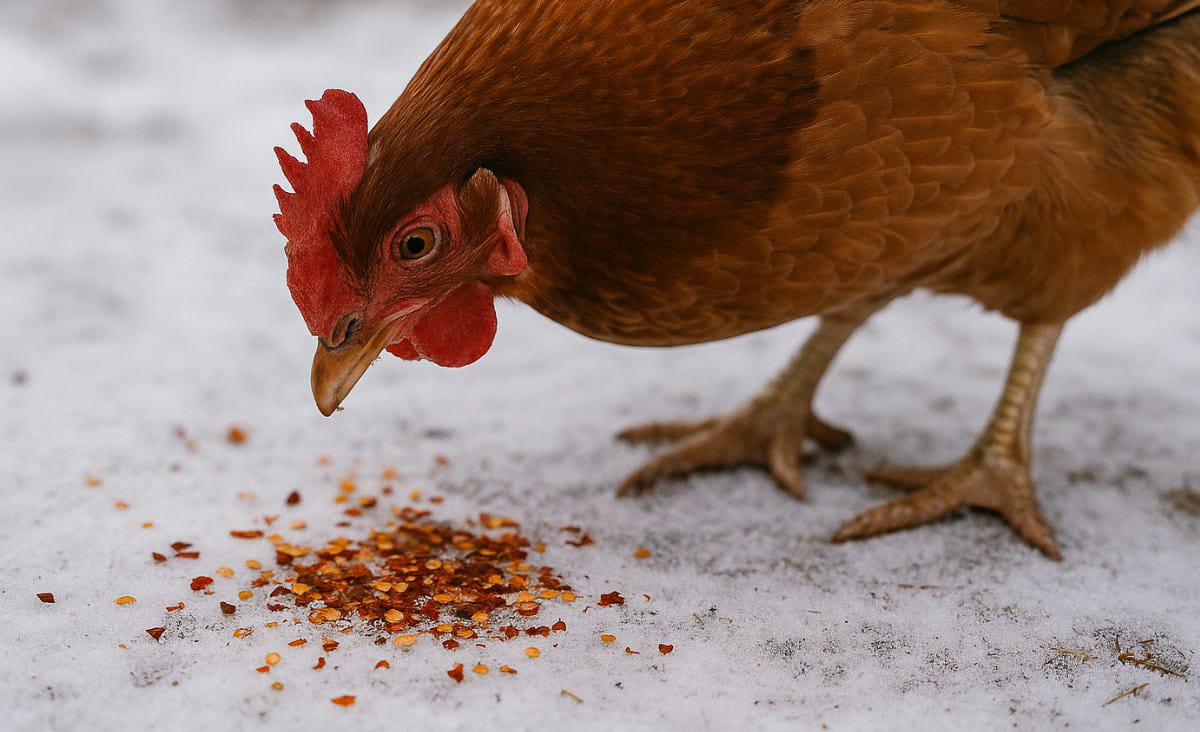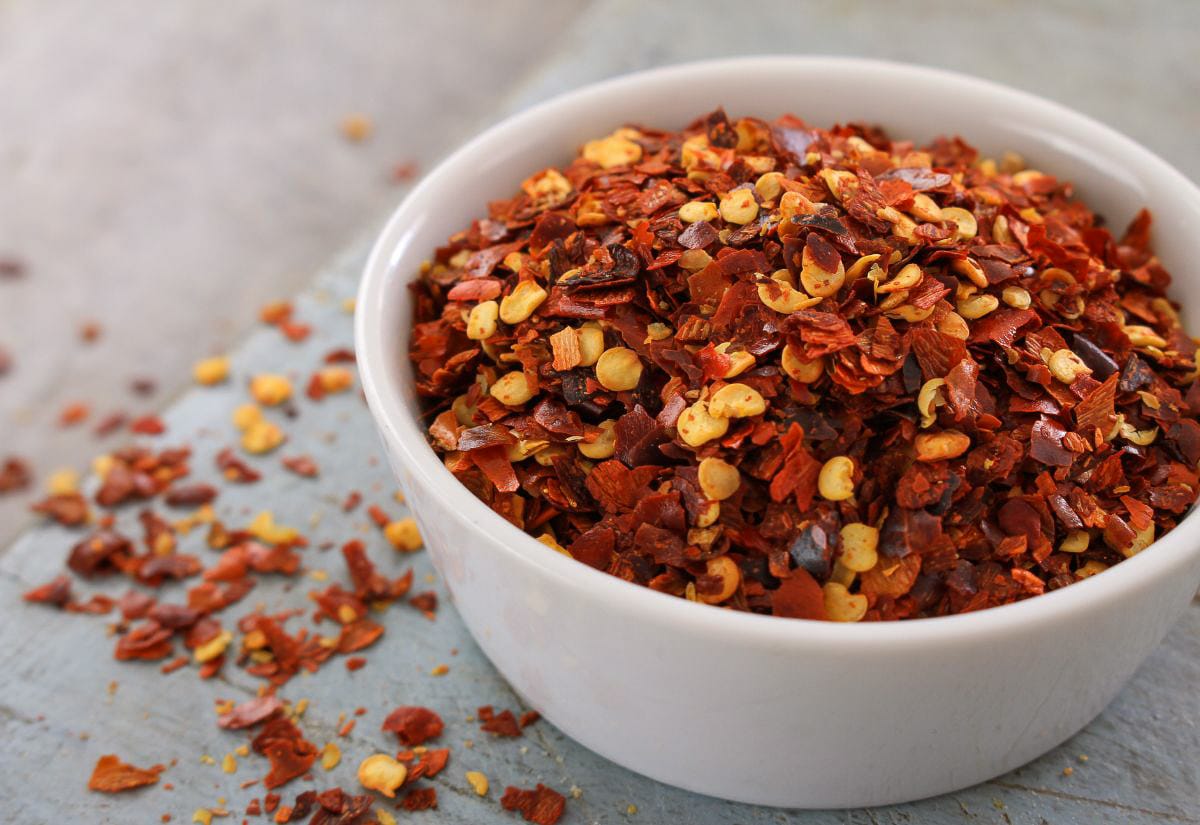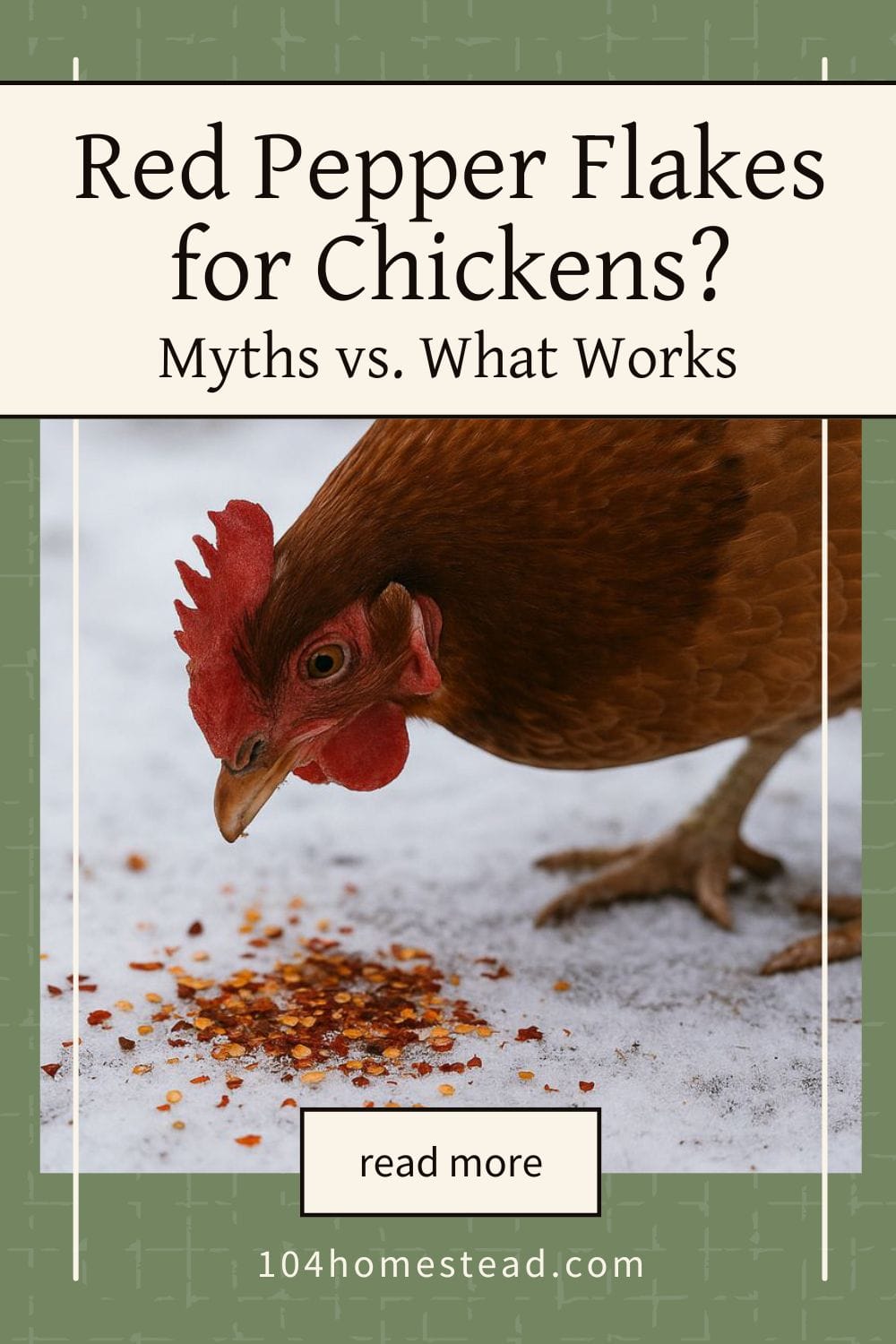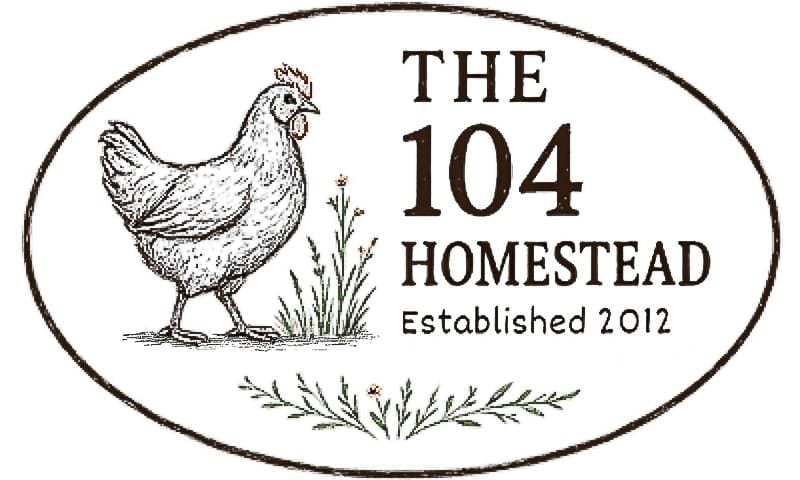Do Red Pepper Flakes Really Help Chickens in Winter? Here’s the Truth
Wondering if adding red pepper flakes to chicken feed in winter actually helps? Here’s what they do, what they don’t, and better ways to support your flock.

Every winter I start getting the same question over and over: “Should I add red pepper flakes to my chicken feed?” It shows up on social media every single year as soon as the temperatures dip. I get it. We all want to help our hens stay warm and keep laying, especially when the days feel short and the coop feels even shorter on eggs.
I’ve kept chickens in Maine long enough to see trends come and go, and I’ll be honest, the red-pepper-flake thing might be the most persistent one yet. So let’s take a minute and look at what really happens when chickens eat spicy peppers, what it doesn’t do, and whether it’s worth adding to your winter routine.
Why People Add Red Pepper Flakes to Chicken Feed
You’ve probably seen the videos: someone sprinkling red pepper flakes in their chickens’ feed while claiming it boosts egg production, warms the flock, and even scares off predators. It seems simple enough. Peppers grow in the garden. Capsaicin is warming. Chickens are tough birds. Why not try?
Here’s the thing… chickens can eat spicy peppers without issue. But that doesn’t mean the claims around pepper flakes really check out.
What Capsaicin Does (and Doesn’t Do)
Capsaicin is the compound that makes peppers spicy. Mammals feel the burn. Birds don’t. Their bodies don’t react to it at all. That’s why wild peppers rely on birds to spread seeds.
Chickens can safely eat peppers and red pepper flakes. The flakes may even give their feed a little extra aroma, which a few hens might investigate and poke at But capsaicin itself doesn’t heat their bodies or change their physiology in any meaningful way.

If you’re growing your own peppers, it’s easy to end up with more than you know what to do with. I’ll walk you through starting them from seed so you’ve got plenty to use fresh, preserve, and share with the flock if you want to.
Red Pepper Flake Myths, Debunked
Let’s go through the claims you’ve probably seen online. Some have a sliver of truth. Most don’t.
Myth 1: Red Pepper Flakes Warm Chickens Up in Cold Weather
I see this one more than anything else, and it sounds logical at first… until you remember birds don’t react to capsaicin. Your hens won’t “feel warm” the way you might when eating something spicy.
Here’s how it really works: Red pepper flakes don’t raise a chicken’s body temperature. Warmth comes from calories, insulation, and coop design, not spice levels.
If your hens need help staying warm, focus on bedding, coop ventilation, and keeping feed accessible. If you want to dig deeper into what chickens actually need to stay warm in winter, this walkthrough covers the basics I rely on every year in Maine.
Myth 2: Red Pepper Flakes Boost Egg Production
I’ve heard this one so often people just say it like it’s a fact. The claim is that pepper flakes stimulate hens to lay through the winter.
Bottom line: Egg laying is controlled by daylight hours, not pepper flakes. You can add all the spice you want, but without 14–16 hours of light, hens naturally slow down. If you want winter eggs, supplemental lighting is what makes the difference.
Myth 3: Pepper Flakes Fight Parasites
There’s a sliver of truth here, but not enough to matter. Some studies hint that capsaicin might have mild antimicrobial properties. But it is not a dewormer, and it won’t treat an active parasite load.
Here’s what’s true: They aren’t a replacement for real parasite management. A balanced diet, a clean coop, and good rotation habits will do far more than pepper flakes ever will.
Myth 4: Pepper Flakes Keep Predators Away
I’ve seen people sprinkle pepper around coops like it’s going to deter raccoons or foxes.
Here’s the real deal: It doesn’t. Not even a little. Mammals may notice the spicy smell, but they’re far more motivated by the scent of fresh chicken. Predator-proofing your coop matters. Pepper flakes do not.
Is There Any Real Benefit to Red Pepper Flakes in Winter?
There is one small benefit, though.
Chickens naturally eat more in winter because they’re burning extra calories to stay warm. If pepper flakes make the feed smell a little more exciting to them, some hens might go at the feed a little harder (mine don’t care one bit). More calories equals more warmth. But that’s a behavior benefit, not a nutritional one.
If you enjoy using them, here’s the simple way to do it. A light sprinkle over the feed is plenty. That’s it.

Better Ways to Help Your Chickens Through Winter
Since red pepper flakes don’t fix winter problems, let’s talk about what does work. These will go a whole lot further for your birds than any sprinkle of spice.
Give Them Enough Calories: Fat and protein help hens maintain body heat. Access to feed around the clock is key. If you’re looking for cheap ways to keep their feed budget under control without sacrificing nutrition, these ideas have saved me a lot over the years.
Use Supplemental Lighting: Fourteen to sixteen hours of light is what keeps egg production steady. A basic plug-in timer (this is the one I use) keeps the light schedule consistent so you don’t have to think about it.
Improve Coop Ventilation: Good airflow makes a huge difference with frostbite and moisture.
Provide Deep Bedding: Deep litter or thick shavings offer insulation and encourage natural scratching, one of your birds’ favorite winter activities.
If you want to see how I prep all my animals for Maine winters, this post covers the systems that keep everyone warm and fed when the temperature drops.
Questions People Always Ask About Pepper Flakes and Winter Flocks
Still curious? These are the questions people ask me the most.
If you want to come back to these winter chicken tips later, make sure to save this post to Pinterest.

I love a good natural remedy as much as anyone, but some social media trends just keep circling back. Red pepper flakes are perfectly safe for chickens. They can be a fun little winter sprinkle. But they’re not a heating pad, a laying booster, or a cure-all.
If you focus on warmth, nutrition, and lighting, your hens will handle winter just fine… pepper flakes or not.
Water freezes fast in winter here in Maine. If you need ideas for keeping water from freezing solid in the cold, this guide walks you through setups that work.
If you’ve tried pepper flakes or have your own winter tricks, feel free to share. I always like hearing what’s happening in other coops.
